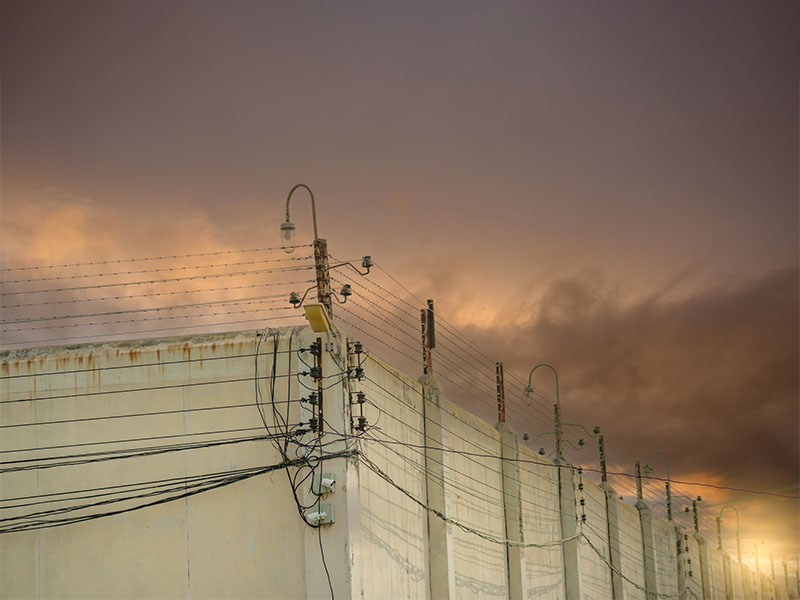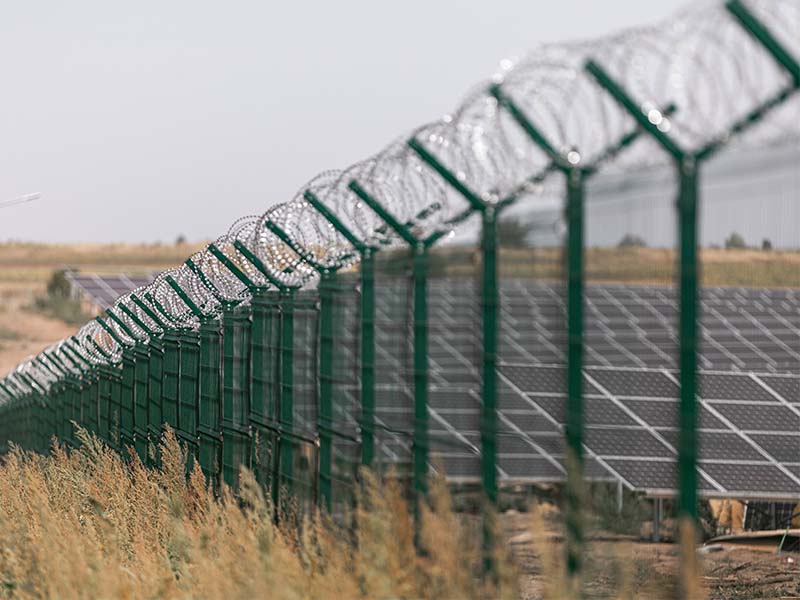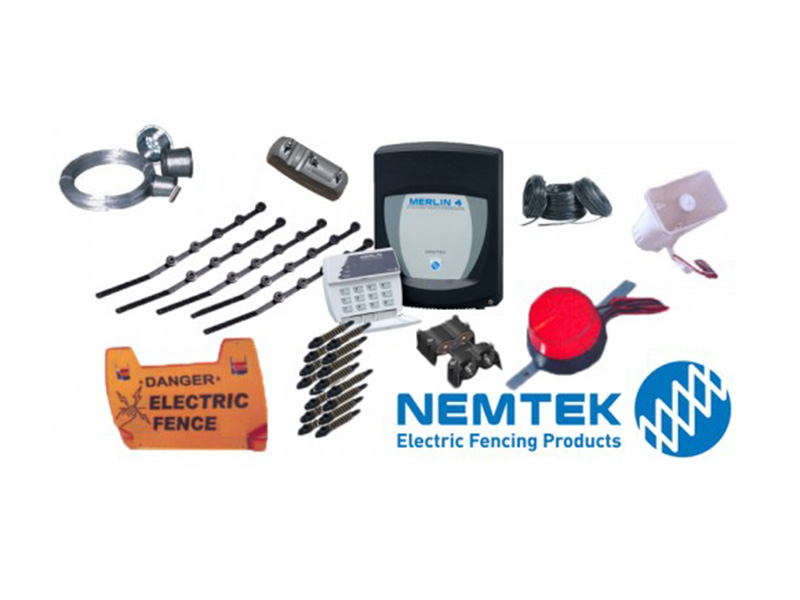
Securing property and managing livestock in Tanzania requires reliable solutions, and electrified fencing services are at the forefront. This article provides essential guidance on choosing the right electric fence, tailored to fit your unique needs from resident to commercial. Learn about different types of electric fencing, installation costs, and customization options without overspending. We’ll dive into the specifics of permanent, portable, and retrofit electric fences, helping you make an informed decision.
Electric fencing in Tanzania provides a safe, cost-effective, and customizable security solution for various properties, with special emphasis on solar-powered fences due to sustainability.
There are different types of electric fences (permanent, portable, retrofit) suitable for specific needs ranging from creating permanent boundaries, temporary enclosures, or enhancing existing fences with electrification.
Safety and efficiency of electric fences are paramount; implementing best practices and proper maintenance is essential to ensure that electrified fencing remains an effective deterrent and operates safely.

The growth of electric fencing in Tanzania necessitates careful selection of the right service. Electric fences provide a safe, durable, and cost-effective alternative to non-electric fences, offering a blend of simplicity and robustness. Particularly, solar-powered electric fences are deemed the most cost-effective solution, given their sustainable energy source. From woven wire fences to high tensile fences and solar-powered electric fences, companies like ProFence LLC and Premier1Supplies offer a wide array of options. They are capable of customizing these fences to fit the available space and specific needs of your property, offering guidance to determine the most suitable fence for your situation.
Several factors need to be considered when selecting an electric fencing service. The size of the property is critical, influencing the type of electric fence needed, the required fence length, the number of gates, and the necessary materials for effective energization. Moreover, the type of animals on the property also impacts the choice of electric fencing. Whether it’s poultry, sheep, goats, pigs, cattle, equines, or rabbits, each animal type dictates the need for adequate voltage and the appropriate type and number of wires.
Your budget also significantly influences your choice. The costs of electric fencing installations can range from $500 to $5,000, with an average of approximately $1,300. These costs are influenced by factors such as property size, chosen materials, and specific requirements.
Customized electric fencing solutions offer a unique blend of security and functionality, tailored to the specific needs and preferences of the property owner. The customization process commences with a comprehensive evaluation of local fence regulations, engaging in discussions with neighbors, and researching potential tax incentives and rebates.
The customization process for electric fences includes:
Considering factors such as the species needing protection, the area size, and the energizer choice
Creating a detailed plan for permanent electric fencing corridors
Personalizing the electric fence setup with added security features
Fine-tuning fence settings to suit individual needs and bolster protection.
Farmers have the ability to customize their electric fences to meet their specific requirements.

Electric fences come in different types, each tailored to meet specific needs. The main types of electric fences are:
Permanent electric fences: designed for enduring durability, ideal for establishing permanent boundaries.
Portable electric fences: offer versatility and can be conveniently moved and installed for temporary enclosures.
Retrofit electric fences: integrate electric capabilities into existing structures, merging traditional fencing with electrification.
Each type comes with its unique characteristics.
These types of electric fences serve a variety of purposes and scenarios. Permanent fences offer robust protection against burglary, vandalism, and trespassing. However, these fences may not effectively deter predators from approaching closely enough to pose a threat.
Portable electric fencing is most efficiently utilized for situations necessitating temporary control of animals, such as rotational grazing or managing horses during trail rides and camping trips where it’s crucial to deter wildlife from entering specific areas.
Permanent electric fences offer the following benefits:
They provide enduring barriers and a secure perimeter for your property.
They are constructed using high-tensile wire, treated posts, fiberglass posts, an electric fence energizer, wire braid or tape, insulators, and earth stakes.
They act as a psychological deterrent, making potential intruders think twice before attempting to breach your property.
They are cost-efficient and require minimal maintenance.
They significantly improve pasture management for increased profitability.
Additionally, fence management tools are vital as they enable efficient fault finding and repairs, upholding the fence’s integrity for dependable protection.
Portable fencing offers a versatile solution for containing diverse animal types, even in remote locations. It can be energized by Gallagher Solar or Battery Energizers, or integrated with a permanent electric fence powered by a mains powered Energizer. Common materials utilized in portable electric fencing include polywire and polytape, which are composed of plastic and metal filaments. The installation process involves placing an electric charger, setting up grounding rods, installing insulators on posts, attaching the fence wire to the insulators, and connecting the fence wire to the charger.
Portable electric fencing offers advantages such as affordability, safety, and protection for livestock, produce, and pets against predators and pests.
Retrofitting electric fencing serves as an economical and simple installation method to enhance the security of existing or new non-electric fences. You can use different offset brackets to attach retrofit fencing to wood posts or steel fences. They can also be used to mount the fencing directly onto the wires of existing non-electric fences like barbed wire or chain link. The operational process involves fitting offset brackets to a conventional fence to suspend an electrified wire on one or both sides of the fence. The wire prevents animals from rubbing or pushing against the fence. This helps to extend its lifespan..
Retrofit fencing offers advantages such as saving time and money by avoiding the necessity of excavating current concrete posts and the expense of purchasing and setting up new posts.

Nemtek is a leading provider of advanced electric fencing products with over three decades of industry experience. Their product range includes:
Perimeter alarm lights
Alarms
Backup power
These products are known for their cost-effectiveness, reliability, and efficiency. Nemtek ensures the reliability of its products by employing Adaptive Power Technology (APT) to detect and optimize the power on the fence, thereby minimizing false alarms.
Their innovative and reliable electric fencing solutions provide a variety of electrified fencing security products that are both cost-effective and efficient.

Maintenance-free electric fences assure effortless security with minimal upkeep, improving safety as a barrier and increasing cost-effectiveness over time due to less maintenance and a longer lifespan. These fences utilize durable components such as fence poles made from sturdy and flexible materials like fiberglass or steel, and galvanized steel wire for the fencing, ensuring longevity.
Brands like Nemtek are renowned for their innovative and reliable maintenance-free electric fencing products, offering peace of mind to property owners.
For superior security, electric fences can be supplemented with extra features. Alarm monitoring systems employ various monitoring methods, including voltage, cut, and short circuit detection, triggering alarms in the event of a security breach and providing real-time updates to mobile devices. Video surveillance integration enables real-time monitoring and recording of activities, aiding in the detection of perimeter breaches and providing valuable visual evidence for identifying trespassers.
Intrusion detection systems have several features that enhance the security of an electric fence, including:
Swiftly identifying trespassers
Delivering a potent electric shock to discourage and impede intruders
Ground wire monitoring
Customizable configurations
Dual-zone activation
Integration with other security systems
These features work together to protect your property, ensuring that access is granted only with the appropriate permission.
Various real-life scenarios have demonstrated the effectiveness of electric fencing. A well-designed electric fencing system can successfully confine a diverse range of animals, from large mammals such as bison to smaller creatures like geese and rabbits, providing a versatile solution for livestock control in different seasons.
Nemtek’s electric fencing products have demonstrated their effectiveness through various real-life applications, including:
Supplying energizers for large animal protection requirements
Developing a low voltage Druid D20 Fence Monitor for areas where traditional electric fences are unsuitable
Collaborating with wildlife conservation organizations to deliver comprehensive farm security solutions.
Portable electric fencing has shown its effectiveness in deterring coyotes, controlling wildlife access to food plots, and maintaining livestock containment on diverse farms and ranches. In comparison, a non electric fence might not provide the same level of protection and control.
Retrofit fencing has effectively improved security by upgrading existing fences, such as upgrading chain-link fences at self-storage facilities with electrified options or replacing chain link mesh with more secure panels.
When installing and using electric fences, safety is of utmost importance. Several safety measures should be observed, including:
Ensuring the energizer is grounded at least 65 feet away from utility grounding fields
Avoiding running fences parallel to power lines
Regularly inspecting the fence for signs of wear
Using clear signage to warn others about the electric fence
Wearing insulated gloves and clothing when working with electric fences
Avoiding operating two separate electric fence systems in close proximity.
To maintain the effectiveness and safety of electric fences, it is important to:
Keep wires at least 5 inches apart
Use a voltmeter to monitor the fence voltage
Establish proper grounding
Use a suitable electric fence energizer
Position fence posts at appropriate distances
Ensure that animals are properly trained to respect the electric fence
Avoid excessive use of wire tie-offs
For maximum safety, adhere to best practices such as using smooth wire instead of barbed wire, avoiding electrification of a barbed wire fence to prevent entanglement, regularly checking the fence voltage with a voltmeter, clearing surrounding vegetation to prevent electrical interference, and setting up a proper grounding system for the electric fence. When selecting an electric fence, it is crucial to consider safety features such as voltage and power output, energizer quality and type, fence wire or tape quality, clear signage and communication, and compliance with local laws and regulations.
In conclusion, electric fencing offers a comprehensive, versatile, and efficient solution for property protection in Tanzania. Whether you opt for permanent, portable, or retrofit fencing, understanding your specific needs and considering factors such as budget, type of animals, and property size will guide you towards the right choice. Brands like Nemtek offer innovative and reliable products that enhance the security and efficiency of electric fences. By integrating additional features like alarm monitoring systems and video surveillance, you can bolster your property’s protection. Always remember to prioritize safety and efficiency when installing and maintaining your electric fence.
No, an electric fence is not expensive to run and will only result in a minimal change in energy consumption, amounting to less than a dollar for an entire month. You can calculate the cost using the formula: (The charger’s watts per day x days used per month)/1,000 = Killowatt Hours Used per month.
The main disadvantage of electric fences is their reliability. They can be affected by issues such as discharged batteries, broken wires, and wind causing wires to come out of insulators, which can make them unreliable for containing animals.
No, electric fences do not draw a lot of electricity. The flow of power is maintained without consuming significant current, so it won’t have a significant impact on your electricity bill.
Yes, electric fences can be a good idea for containing dogs with a tendency to escape through or damage conventional fences due to their quick installation and reliability.
You will need steel or aluminum wire for a permanent perimeter fence, with the option to electrify it using a fence charger. For domestic and industrial applications, consider using five to seven strands of thin stainless steel wire on perimeter walls. This will require UV resistant insulators for support. (End of response)
